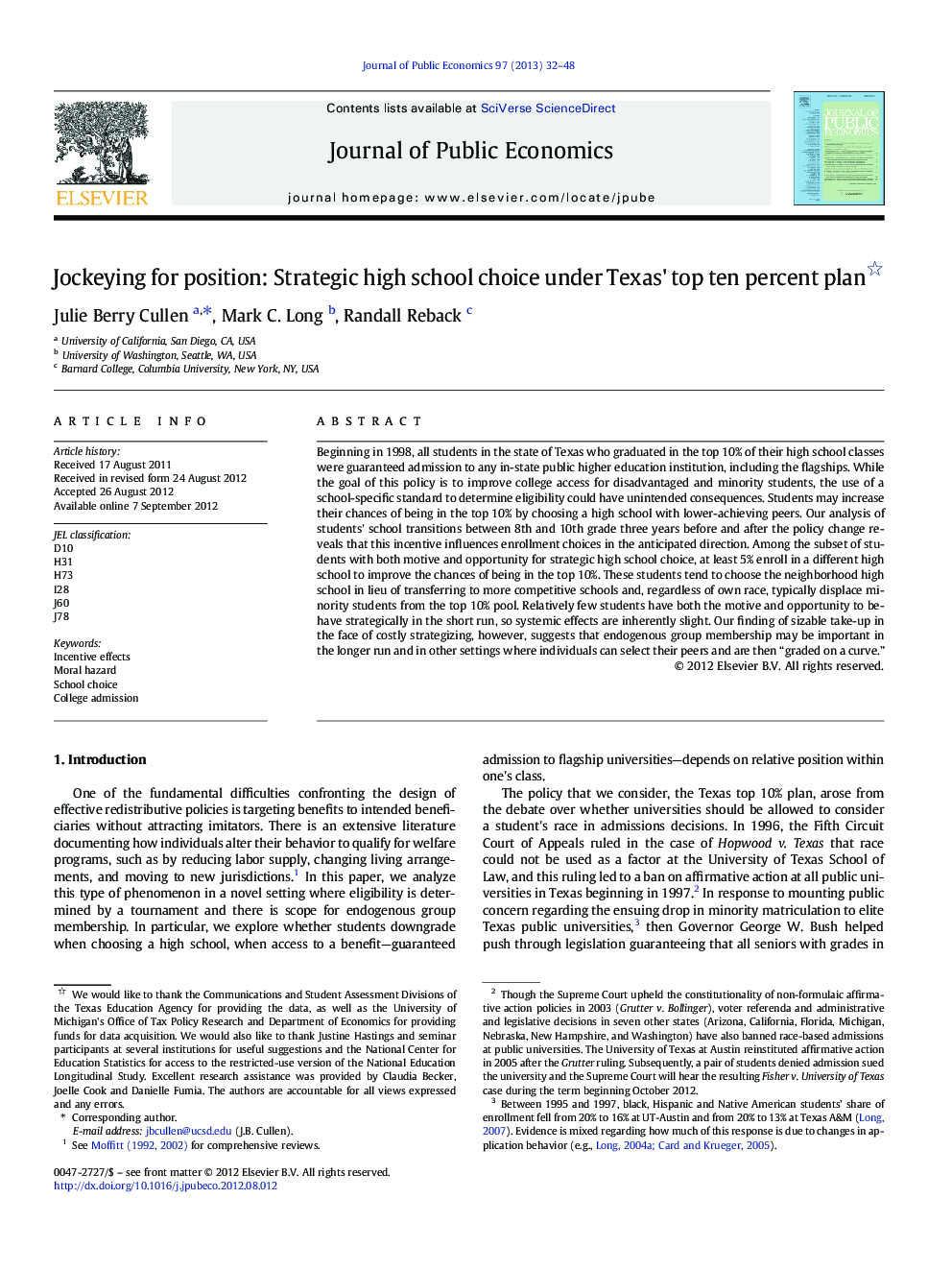| Article ID | Journal | Published Year | Pages | File Type |
|---|---|---|---|---|
| 969977 | Journal of Public Economics | 2013 | 17 Pages |
Beginning in 1998, all students in the state of Texas who graduated in the top 10% of their high school classes were guaranteed admission to any in-state public higher education institution, including the flagships. While the goal of this policy is to improve college access for disadvantaged and minority students, the use of a school-specific standard to determine eligibility could have unintended consequences. Students may increase their chances of being in the top 10% by choosing a high school with lower-achieving peers. Our analysis of students' school transitions between 8th and 10th grade three years before and after the policy change reveals that this incentive influences enrollment choices in the anticipated direction. Among the subset of students with both motive and opportunity for strategic high school choice, at least 5% enroll in a different high school to improve the chances of being in the top 10%. These students tend to choose the neighborhood high school in lieu of transferring to more competitive schools and, regardless of own race, typically displace minority students from the top 10% pool. Relatively few students have both the motive and opportunity to behave strategically in the short run, so systemic effects are inherently slight. Our finding of sizable take-up in the face of costly strategizing, however, suggests that endogenous group membership may be important in the longer run and in other settings where individuals can select their peers and are then “graded on a curve.”
► Attending a lower achieving high school might guarantee access to a flagship. ► At least 5% of Texas students with motive and opportunity trade down. ► Systemic effects are slight as few students fall in this would-be eligible category. ► Relative performance evaluation is pervasive and may curb sorting by ability.
